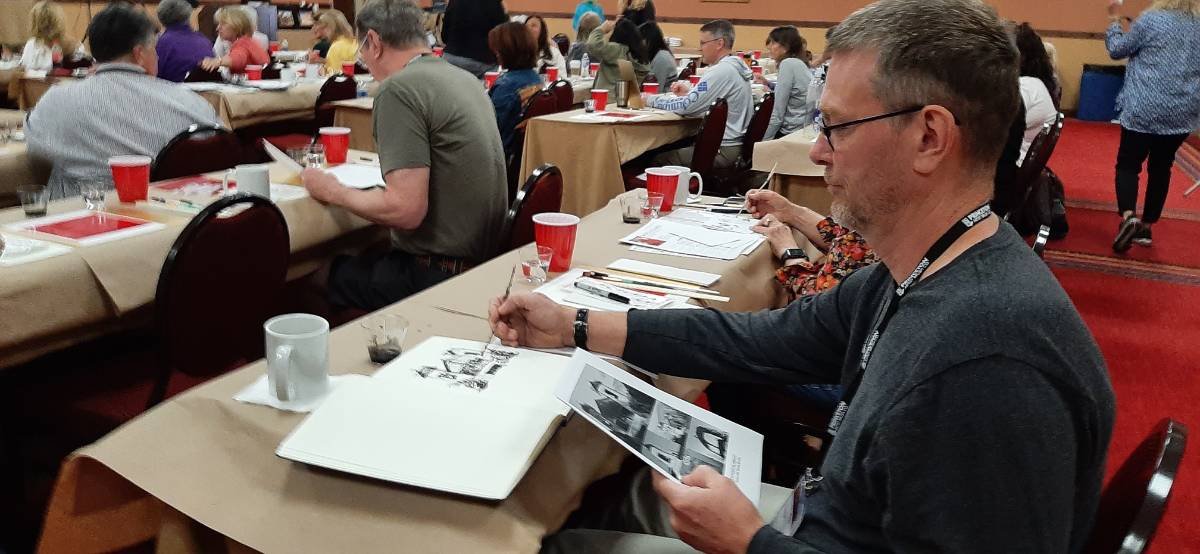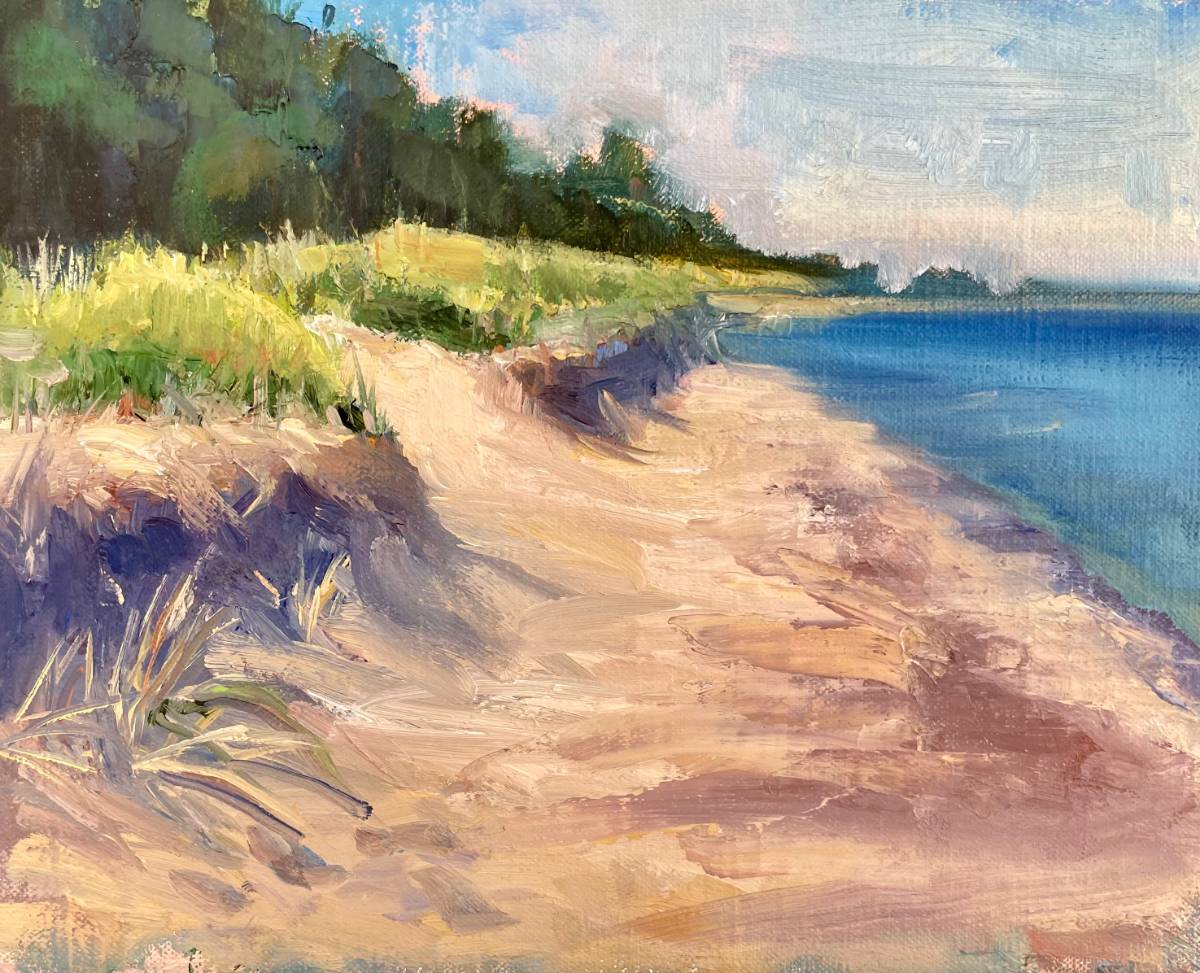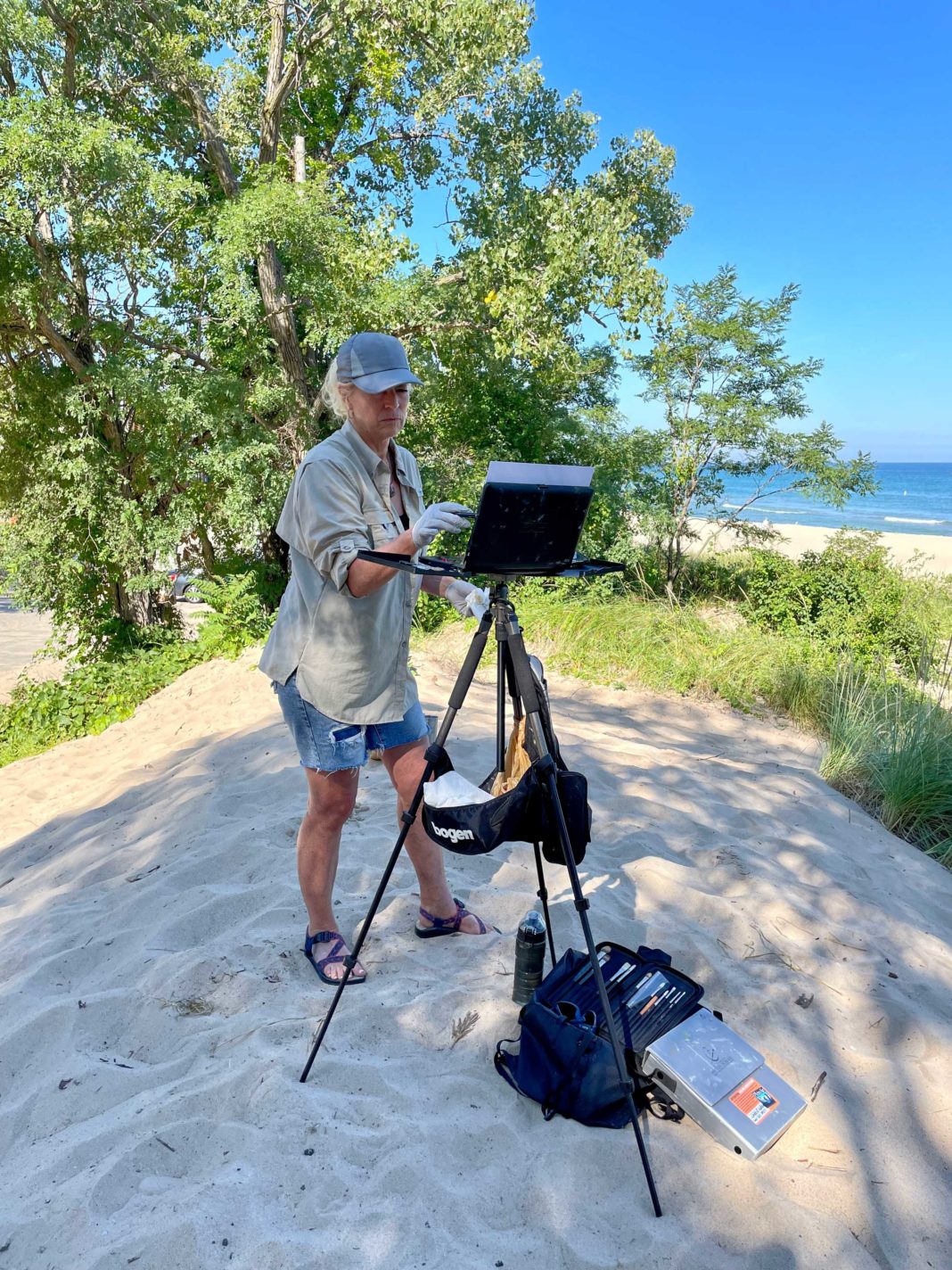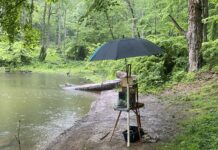Carrie Curran is a professional artist living in Scottsdale, Arizona merging her passions for art, teaching, and business. At the 9th Annual Plein Air Convention & Expo (PACE), she led the Basics Course with exercises that focused on the principal foundations of the painting process. Here’s an exclusive look at Carrie’s “Basics of Plein Air Painting” tips.
Carrie will be joining us next at the 5th Annual Plein Air Live, March 6-8, 2024!

Basics of Plein Air Painting
By Carrie Curran
Before Painting:
- Must have sturdy, portable equipment and essential supplies
- Find subjects that interest you and places you can easily return to for further study
- Observe the sky and light source, a vital element in all outdoor painting
- See relationships – value, color, masses, light and shadow patterns
- Sketch thumbnails to determine best composition
Sketching Your Scene:
- Draw small frames / format boxes to sketch thumbnails
- Consider the proportions / format of the canvas you will be using
- Outline the major shapes, and eliminate detail
- Draw quickly and make a note about what inspired you
- Shade in your value masses using a value scale of 3 to 5 values
- Refer to Edgar Payne’s book, Composition of Outdoor Painting, for ideas and inspiration for successfully designed compositions

Steps for Success:
- Have gear and supplies ready at a moment’s notice
- Choose a subject using a viewfinder (and your feelings)
- Squint and observe the scene for value masses, shapes, proportion, perspective, color, light and shadows
- Quickly draw thumbnail(s); designing a composition with a value structure, designed to keep the viewer’s eye
- Use your sketch as a guide to draw an outline of the value masses on the canvas and paint the average color and value of those shapes first
- Use the drawing as a reference while you closely continue to observe your subject
- When introducing color, use a limited palette and make sure your colors stay consistent with the value plan
Connect with Carrie Curran at carriecurran.com.
> Subscribe to Plein Air Today, a free newsletter for artists




